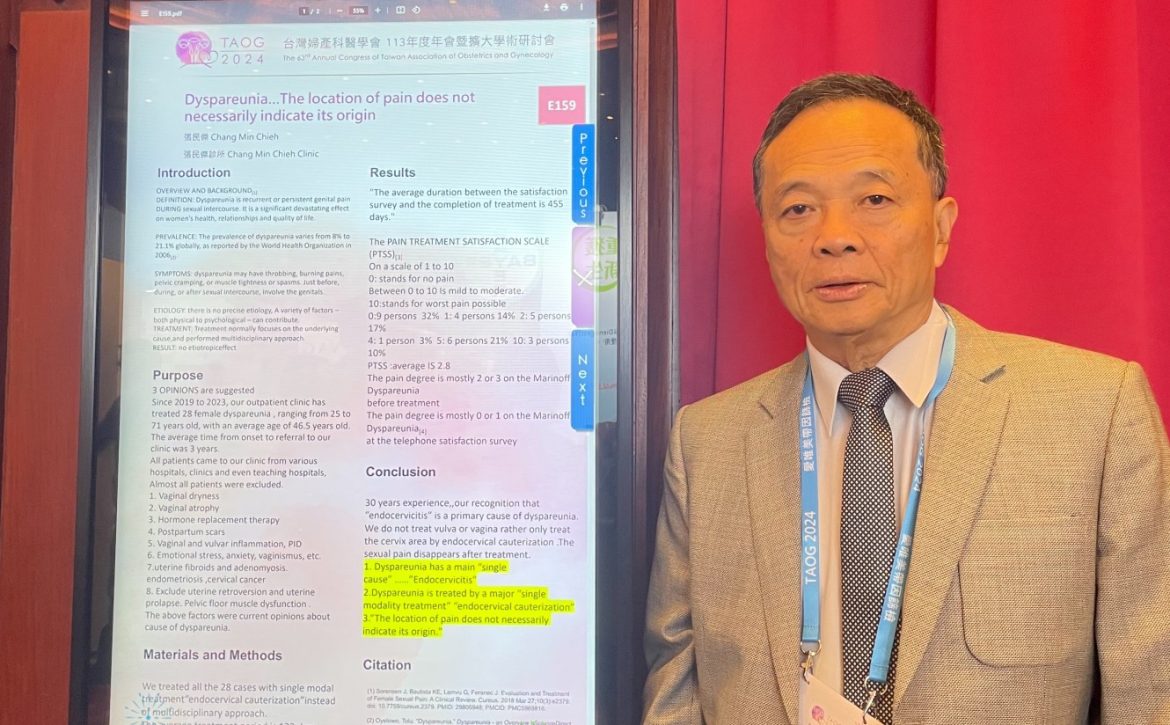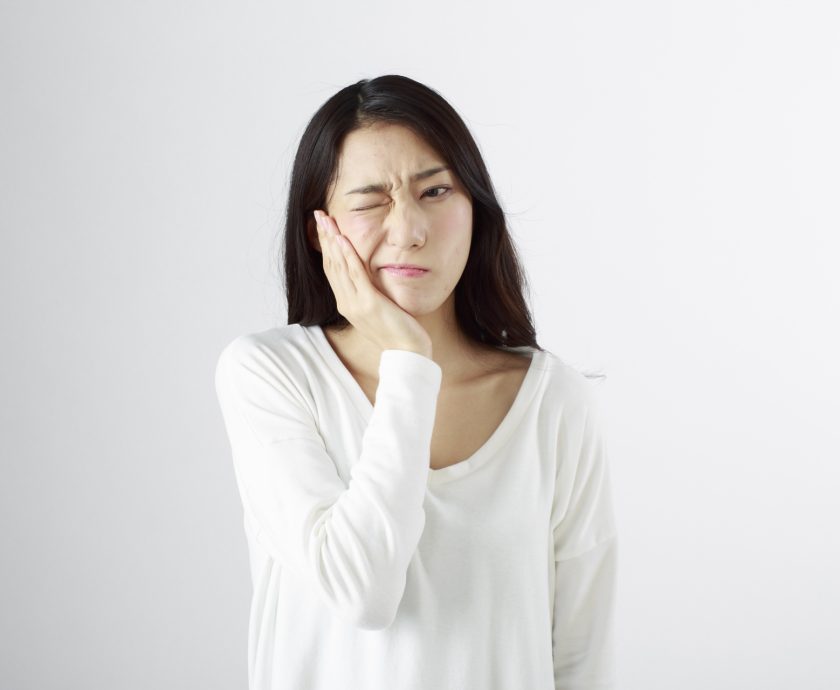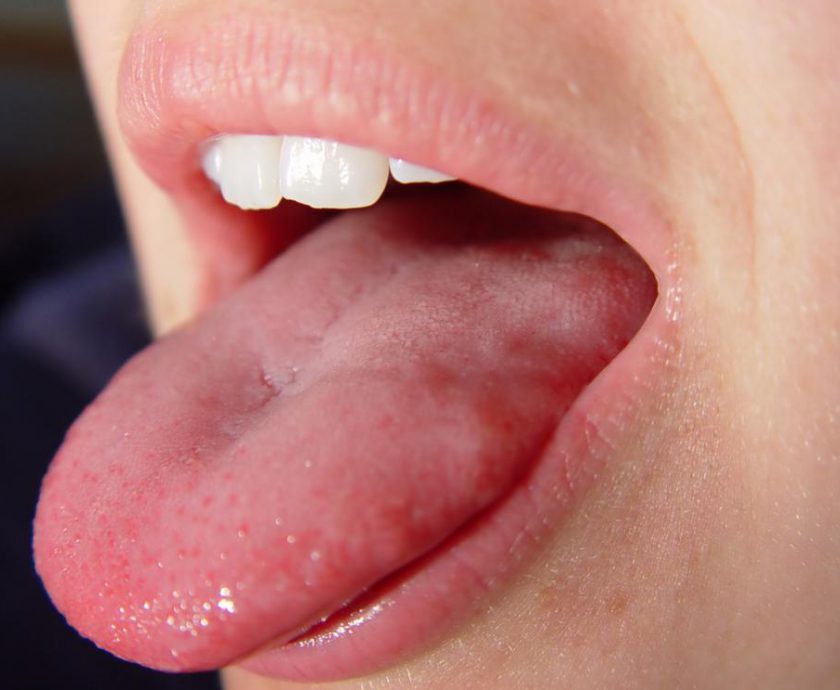Dyspareunia Specialist

Article published on 2024.03.09-10: Title: The Location of Pain During Intercourse Does Not Necessarily Indicate the Source of the Pain.
DEFINITION: Dyspareunia is recurrent or persistent genital pain DURING sexual intercourse. It is a significant devastating effect on women’s health, relationships and quality of life.
https://www.5678news.com/news_details.php?n=202403130728171508
PREVALENCE: The prevalence of dyspareunia varies from 8% to 21.1% globally, as reported by the World Health Organization in 2006
SYMPTOMS: dyspareunia may have throbbing, burning pains, pelvic cramping, or muscle tightness or spasms. Just before, during, or after sexual intercourse, involve the genitals.
ETIOLOGY: there is no precise etiology, A variety of factors – both physical to psychological – can contribute.
TREATMENT: Treatment normally focuses on the underlying cause,and performed multidisciplinary approach.
RESULT: no etiotropic effect
So far all papers show that the cause of dyspareunia is caused by multiple factors, so the treatment is also based on possible causes, effects vary. THE PURPOSE OF THIS ARTICLE
3 OPINIONS are suggested
Since 2019 to 2023, our outpatient clinic has treated 28 female dyspareunia , ranging from 25 to 71 years old, with an average age of 46.5 years old.
The average time from onset to referral to our clinic was 3 years.
All patients came to our clinic from various hospitals, clinics and even teaching hospitals, almost all patients were excluded.
1. Vaginal dryness
2. Vaginal atrophy
3. Hormone replacement therapy
4. Postpartum scars
5. Vaginal and vulvar inflammation, PID
6. Emotional stress, anxiety, vaginismus, etc.
7.uterine fibroids and adenomyosis. endometriosis ,cervical cancer
8. Exclude uterine retroversion and uterine prolapse. Pelvic floor muscle dysfunction .
The above factors were current opinions about cause of dyspareunia. Methology:
We treated all the 28 cases with single modal treatment “endocervical cauterization”instead of multidisciplinary approach.
The average treatment period is 132 days.
Result:
“The average duration between the satisfaction survey and the completion of treatment is 455 days.”
The PAIN TREATMENT SATISFACTION SCALE (PTSS)
On a scale of 1 to 10
0: stands for no pain
Between 0 to 10 Is mild to moderate.
10:stands for worst pain possible
0:9 persons 32% 1: 4 persons 14% 2: 5 persons 17%
4: 1 person 3% 5: 6 persons 21% 10: 3 persons 10%
PTSS :average IS 2.8
The pain degree is mostly 2 or 3 on the Marinoff Dyspareunia
before treatment
The pain degree is mostly 0 or 1 on the Marinoff Dyspareunia
at the telephone satisfaction survey
Discussion:
the pudendal nerve is innervation of the pelvic region, including the cervix, pudendal neuralgia, like vulvodynia, is a pain condition diagnosed clinically in the absence of other pathology. Characteristic symptoms include urinary frequency and urgency, dysuria, dyschezia, vaginal burning, dyspareunia, Pudendal Neuralgia may also result from certain infections.
Conclusion: 30 years experience,,our recognition that “endocervicitis” is a primary cause of dyspareunia.
We do not treat vulva or vagina rather only treat the cervix area by endocervical cauterization .The sexual pain disappears after treatment.
1. Dyspareunia has a main “single cause” ……”Endocervicitis”
2.Dyspareunia is treated by a major “single modality treatment” “endocervical cauterization”
3.“The location of pain does not necessarily indicate its origin.”
Dr. Chang Min-Chieh stated that the pudendal nerve innervates the pelvic area, including the cervix. Pudendal neuralgia, similar to vulvar pain, is clinically diagnosed in the absence of other pathologies. Characteristic symptoms include frequent urination, urgent need to urinate, difficulty urinating, vaginal burning sensation, and pain during intercourse. Pudendal neuralgia may also be the result of certain infections, as the pudendal nerve or its branches traverse the vulva, vagina, and cervix.
Dr. Chang Min-Chieh emphasized that based on his 30 years of experience, he believes that “endocervicitis” is the primary cause of pain during intercourse. The location of the pain during intercourse is not necessarily the source of the pain. Therefore, he does not treat the vulva, clitoris, or vagina, but rather focuses solely on treating the cervical area through cervical cauterization. In fact, his treatment has proven that the patients’ pain during intercourse disappears. Thus, he believes that pain during intercourse has a primary single cause, which is “endocervicitis,” and that pain during intercourse can be most effectively treated with the primary single treatment method of “cervical cauterization.”








